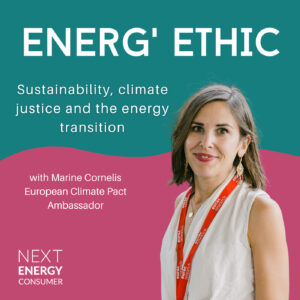Energy bills are where policy meets everyday life. They directly shape public trust in the climate neutrality agenda.
But when renewable energy is perceived as inaccessible or unaffordable, people lose faith in the transition. The truth is:
• Poorly designed tariffs worsen inequalities and hit vulnerable households hardest.
• The energy price crisis and climate extremes like the record-breaking summer of 2024 have shown how social, economic, and ecological issues are interconnected.
What is wrong with current tariffs?
• Renewable energy cost advantages often do not reach households.
• Dynamic tariffs—while promising—are out of reach for many, especially those facing financial or technological barriers.
What do fair tariffs look like?
They need to:
• Protect households from price shocks (remember the energy supply crisis during the Russia-Ukraine war?).
• Promote energy savings and load-shifting during times of low renewable production.
• Ensure affordable renewable energy access, especially for low-income families.
Examples of what works:
• Italy’s on-bill financing for energy efficiency.
• Greece’s appliance voucher program.
Both show how tailored programs can help people use energy smarter while supporting renewables.
Key recommendations:
1. Simplify tariffs so people can understand them.
2. Promote dynamic pricing with tools like sub-metering and granular consumption data.
3. Link network costs to market signals without unfairly burdening households.
4. Use tax policies to support renewables and introduce safeguards like basic supply rights or block tariffs.
5. Involve vulnerable groups in tariff design through citizens’ panels and consumer organizations.
What is at stake?
Without fair tariffs, we risk leaving too many behind in the energy transition. Let us work toward solutions that balance affordability, climate action, and equity.
I am incredibly grateful for having had the opportunity to dig into this critical topic for the past 6 months, and share these key points today at such at the launch event of Boosting Participation in the Energy Transition: Five Action Areas for the New EU Policy Cycle, a report by the Green European Foundation and Heinrich-Böll-Stiftung European Union, Brussels
It was inspiring to exchange ideas with so many brilliant minds committed to accelerating the energy transition.
For a deeper dive into these recommendations, and discover the other briefs, read the full report here.
A big thanks to the incredible team who made this report and event possible, Taube Van Melkebeke Matthew Jones and Joerg M.. The perfect way to end a busy week in Brussels!
What should fair energy tariffs look like? Let me know your thoughts below!



